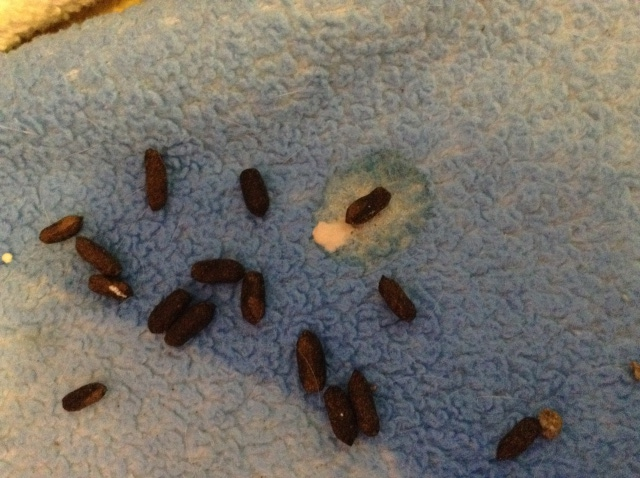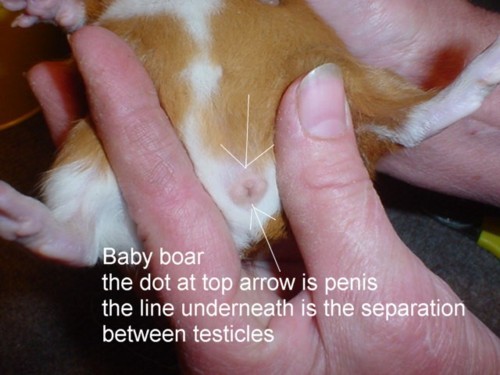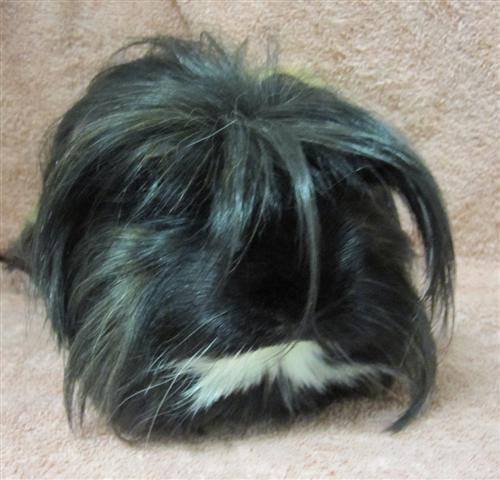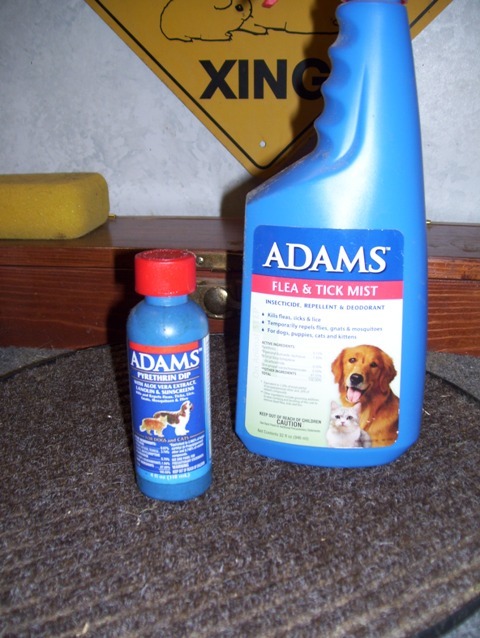QuestionI went into one website, and there were like several different lumps that guniea pigs can get. I might have asked you a while back about her being pregnant well i think now she might have one of those lumps that start with t but if you send me info on all of them I would like that every once in while my guniea pig might cough like she is choking, and i have noticed she has a large gore under her throat like she has thyroid problems and tonight I was holding her she has a soft lump right on the back of her neck and her face looks really round and sometimes she looks really depressed. so now I do not think she pregnant again i think she might have one of those lumps if you can give me your email address i can send you a recent pic of her because some of the pic i seen of guniea pigs on the other website looked like that.
I hope you can help me and then I live in rockingham nc how can I find vet that will even look at a guniea pig
AnswerLucy,
Sorry for just now getting back to you with an answer, internet has been down around town. So sorry about that.
Here is some info on all the different lumps and bumps a Guinea Pig can get.
A lipoma is a benign tumor of fatty tissue, meaning a non-cancerous lump of fat cells. Lipomas can be removed surgically or simply monitored if the tumor is not interfering with movement and if it appears to cause no pain.
Lipomas are thought to be hereditary and are usually not painful and seldom malignant. A malignant lipoma is called a liposarcoma. In humans, the condition is reportedly quite common and is frequently genetic in origin, due to a mutation of the mitochondrial DNA.
Guinea pigs can develop multiple lipomas. It is wise to check out any new lumps. Your vet can perform a biopsy to identify any suspicious lump or may choose to monitor a lump identified as a lipoma for changes. If you have a digital camera, hold a ruler nearby and snap a quick photo. Digital photos can be a good record of comparison.
Both Male and Female Guinea Pigs can Develop Mammary Tumors
You may notice a lump in the chest area and there may be bleeding of the teat. Surgical removal of the tumor is recommended to avoid rupture or abscess. Evaluate the guinea pig as a surgical candidate. Although most mammary tumors are not cancerous, you may wish to send the tumor out for a histopathology for more information.
The newest Ferrets, Rabbits, and Rodents -- Clinical Medicine and Surgery, says that the most common tumor in gps is the "trichofolliculoma, a benign basal cell epithelioma."
"Trichofolliculomas appear as solid or cystic masses, most commonly over the lumbosacral area. They are easily removed surgically."
Like sneezing, some coughing is normal in guinea pigs. Most of the time, coughing is brought about by a minor irritation in the windpipe, possibly caused by inhaling dusty hay or something similar. More serious would be constant coughing, which could be the sign of an infection or illness. Kennel Cough, in particular, is a rather serious illness in guinea pigs, and can actually be transmitted between species, including dogs, rabbits and guinea pigs. If any coughing is accompanied by other respiratory problems, particularly wheezing, then it is most likely a sign of a respiratory infection.
Lumps/Abcesses on Guinea Pigs
These particular lumps are caused by a bacterium called Streptococcus zooepidemicus infecting guinea pigs.
Of course guinea pigs may get swellings or lumps on any area of the body, but the condition called "lumps" usually causes swellings aroung the head and neck.
The bacteria, having been introduced to the cavy by a carrier animal (usually a bought in cavy), gains access to the body via small abrasions in the mouth. Vitamin C deficiency will predispose to infection as it retards wound healing. An abcess forms at the site of entry and these may swell up to golf ball size. Abcesses may form in any organ, however head and neck are most common. If the bacteria is introduced into a group of cavies which has never had contact with it before, an epidemic may occur with cavy deaths. Later on surviving cavies will show the classical "lumps" in the neck.
Prevention
* good husbandry ie:
o fresh greens every day for Vitamin C
o avoid overcrowding
o clean bedding to avoid ammonia build up
o good fresh hay free of thistles and mould
* avoid mixing bought in stock with resident cavies straight away
* regularly check cavies for neck lumps and treat any affected seperately
Treatment
* large abcesses may need to be lanced and drained. Sometimes sedation is needed for this. Valium 5mg/kg intraperitoneally given by a vet works well. Keep the area clean and free of flies whil it heals. Antibiotics will be needed.
* small abcesses less than 1cm diameter may respond to antibiotics alone. Cephalexine (Rilexine, Ceporex) seems to be relatively safe in guinea pigs. The dose is 50-100mg/kg daily by injection for 5-10 days. All antibiotic injections are restricted medicines. This means that your vet will need to see your caviary and /or at least some affected cavies, before prescribing antibiotics. Also as the antibiotic must be given by injection, either your vet must give the injections or instruct you in the proper way to do this.
Best way to find a good Guinea Pig vet is to look through the phone book and find an exotic or small animal vet, call either a Guinea Pig rescue and ask what vet they use or call either a local shelter or a local pet store that has Guinea Pigs and find out what vet they use. Even better is if you can find a Guinea Pig Breeder in your area call them and find out what vet they use. That is the easiest and best way to find a good vet that knows a lot about Guinea Pigs.
I hope this helps and that your Guinea Pig is going to be alright,
Take care now,
Jules

 Gingers pee and poop
Question
Gingers pee and poo
my one guinea pig O
Gingers pee and poop
Question
Gingers pee and poo
my one guinea pig O
 first time owner
QuestionIm getting my first guinea pigs next week (exci
first time owner
QuestionIm getting my first guinea pigs next week (exci
 Eye Problems
QuestionHi, one of my guinea pigs has an eye problem. I
Eye Problems
QuestionHi, one of my guinea pigs has an eye problem. I
 Ginger haired piggy
QuestionHi Pat,
I have a guinea haired guinea pig cal
Ginger haired piggy
QuestionHi Pat,
I have a guinea haired guinea pig cal
 Itchy Pig
QuestionHi Pat
I appreciate your time. In recent
Itchy Pig
QuestionHi Pat
I appreciate your time. In recent